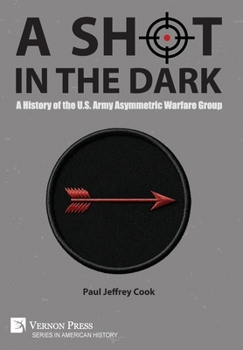A Shot in the Dark: A History of the U.S. Army Asymmetric Warfare Group
This book presents the U.S. Army Asymmetric Warfare Group (AWG) as an example of successful change by the Army in wartime. It argues that creating the AWG required senior leaders to create a vision differing from the Army's self-conceptualization, change bureaucratic processes to turn the vision into an actual unit, and then place the new unit in the hands of uniquely qualified leaders to build and sustain it. In doing this, it considers the forces...
Format:Hardcover
Language:English
ISBN:1648898165
ISBN13:9781648898167
Release Date:February 2024
Publisher:Vernon Press
Length:358 Pages
Weight:1.39 lbs.
Dimensions:0.8" x 6.0" x 9.0"
Related Subjects
HistoryCustomer Reviews
0 rating





